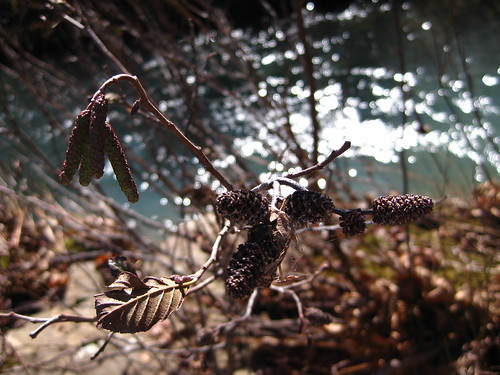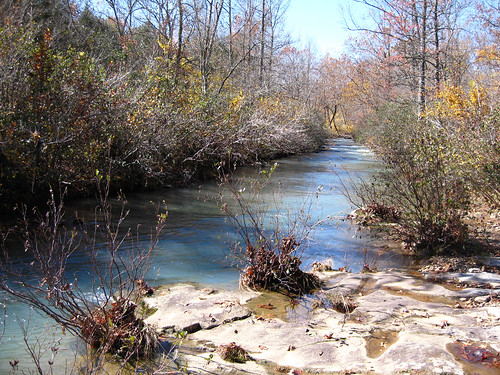Resource Library
Plant of the Week: Alder - Jan. 23, 2015
(473 words)
FAYETTEVILLE, Ark. -- Native shrubs are commonly seen in wild places in Arkansas but seldom make it into gardens and landscapes. Smooth Alder (Alnus serrulata) is common throughout Arkansas, except for counties adjacent to the Mississippi River, but it has never made the jump into gardens because it lacks the panache we like to see in our landscape plants. Plus, when seen in the wild, it often grows as an impenetrable tangle of brush.
Alders are members of the birch family and native to the northern hemisphere with about 40 species described with about a third of these native to the United States. Only the smooth alder is common in the southeastern states and this is the only species found in Arkansas.
Smooth Alder usually grows as a multi-stemmed deciduous shrub that branches from the ground and forms dense thickets in moist areas and along river banks. Occasionally it can reach treelike proportions but usually it grows 6 to 10 feet tall with a slightly greater width. Dark green leaves are ovate, 2 to 4 inches long with fine uniformly serrate leaf margins. In the fall. leaves will take on shades of yellow or orange but are often blotched with large black blobs.
In late winter the two inch long drooping male catkins are produced in abundance and turn yellow or brownish as they release their pollen. The upright female cones are quarter inch long red affairs in groups of 3 or 4 that grow during the summer and mature in the fall at about an inch in length and look like miniature pine cones.
Legumes get all the glory when it comes to fixing nitrogen, but it turns out that alders also are capable of pulling off this important trick. Alders can convert atmospheric nitrogen – a normally stable gas in great abundance in the atmosphere – into a form of nitrogen (ammonia) which can be used by the plant to spur plant growth.
This feat is accomplished by a symbiotic relationship with a filamentous soil bacterium that invades the root system and causes the formation of golf ball sized root nodules to form. Nitrogen fixation rates can reach almost as high as found in legumes. Because alders can fix their own nitrogen they are important pioneer species in plant ecosystems and are often found in disturbed sites, on barren sand dunes, or – as seen with our native smooth alder – along streams and in wet ground where nitrogen is always in short supply. Alders are one of the plants used to reclaim ground disturbed in mining operations.
Smooth alder is seldom seen in gardens but it can be used in moist, edge of the wood situations or along ponds or streams in the garden. It is a favorite food of beavers so can be cut back repeatedly to maintain it at about any desired size. For more information about horticulture, or to see other Plant of the Week columns, visit extension’s website,http://uaex.uada.edu/yard-garden/resource-library/plant-week/or contact your county extension agent.
Pursuant to 7 CFR § 15.3, the University of Arkansas System Division of Agriculture offers all its Extension and Research programs and services (including employment) without regard to race, color, sex, national origin, religion, age, disability, marital or veteran status, genetic information, sexual preference, pregnancy or any other legally protected status, and is an equal opportunity institution.

